What TLC cover in the 'Tango Medicine' workshop in festivals...
- Chichi Amatodo
- Jul 30, 2021
- 6 min read
Updated: Nov 28, 2021
In this workshop we learnt to navigate the world that is Tango; what Tango has to teach us about being human; our bodies’ and our lives’ imprint on Tango; and how Tango can be a form of medicine to observe and highlight parts of ourselves that need a little TLC. Festie fairies joined us to learn gender-neutral roles within Tango; embracing the texture that our lives tattoo into our bodies and manifest in our movements; what it takes to honour the responsibility of moving with another; and understanding & respecting personal space, and our human need for one another.

Tango Mantra Haiku:
Entre abrazo
Nos conmueve la tierra
Surge lo que soy
(Surja lo que surja)
Translation:
Within an embrace
The Earth moves us to be moved
What I am rises
(Whatever might happen)
Introduction to Tango

The grassroots of Tango were sculpted in Buenos Aires, Argentina, & Uruguay, by the people for the people. It was born out of the immigrants, indigenous and Africans trying to find soul in the soulless beast of the city. Tango developed in the poorest areas - in the patios of 'conventillos' (fast built constructions that crammed in the ever-increasing volume of immigrants sailing over from Europe). Entire families were squeezed into rooms in 40 degree heat, empoverished, and with no privacy, sharing everything. They embraced the chaos and made an art of proximity & being together, making the problem into the solution, and creating a dance that made them enjoy the inevitable squish of bodies. The magic happened in the shared patios & streets, where people burst out for some air and restbite from the heat. Here, the medly of cultures speaking an array of languages united through the universal language of music, playing whatever instrument they had, bundling them together and jamming.

Payadores like Gabino Ezieiza would recite improv for days at a time. Instruments were made and fixed in all sorts of creative ways. The accordion, for example, was a polite marching band intrument that the Germans brought over. The Argentine way dismembered this instrument, opening it up, smashing it apart, and putting notes in nonsensical places, wherever there was space. And yet somehow it all works. This chaos gives birth to the bandonion, the heart of the sound of Tango. It is a metaphor of the illogical chaos where nothing works as it should, and yet somehow it does. And so Tango was eventually born, rising from the choas like a dancing pheonix expressing all the richness of life in these bustling hubs.

The Milongas, where people gathered to play music and dance, were made illegal several times, given a reputation to be illicit when it was simply a place of freedom… an expression of humanity without society’s expectations on class & gender. Women who wanted to be free could socialize and be in proximity to whom they pleased, without fathers or husbands. Many were widowed or simply didn't wanted to be married and owned, giving them a reputation of being wild women or prostitutes. But that was not always the case.

Drawing by Drew Walker, of the Milonga de las Abuelas de Plaza de Mayo, a Milonga held in honour of the grandmothers who fought for their children and grandchildren that were tortured and taken during the dictatorship.
In Buenos Aires, to this day, Tango is considered a form a therapy to cope with the chaos of modern life. Everyone has their version of it. There are many worlds of tango - from the patriarchal to the gender fluid - but the one thing they have in common is that the Milonga is a place where we find communion through the universal language of dance and music. It is a form of therapy and a valuable medicine for our quality of life. The best way to understand why, is in the origin of the word 'Tango'. The word Tango comes from the Congo. It means ‘present moment’ - apt, as Tango is a form of meditation in movement with another, connecting you to yourself, the Earth, and your fellow human, regardless of age, ability, status or gender, because, in its fundamental form, it is simply a walk, with all the texture of life within it, and the texture of those who have danced before, and the texture your life has given you. For us, dancing Tango is not about looking like another, or dancing perfectly. For us it’s about finding your movement in a healthy loving way, embracing your body and form and what you want to express with it, and sharing that with another.
Sometimes pictures paint a thousand words. So below I have added an album from one of our favourite Milongas, "Muy Lunes", held by Martin Chili in San Telmo, Buenos Aires. These captivating images, taken by Hernan Blanco, help to tell the story of the world and medicine that Tango is for us. Enjoy the expressions of people embrace; and faces, from the meditations, the tears, the joy, the giggle fits... it is all there. Tango is our treasure; a human heritage that helps our hearts connect, regardless of age, gender or ability... everyone is embraced by the Tango embrace.
What we covered/cover in the workshop...
- We go through 3 aspects of Tango that help understand the dance:
- 1) the emotional practice: trust, intimacy, responsibility, patience, awareness and meditation
- 2) the physical technique: balance, earthing, walking.
- 3) swagger: the confidence to do you, and love it: to play, to feel, to explore...to find your own texture in your unique body and all it holds.
Part One: Emotional
- We need to use metaphors to express aspects of Tango. When you begin to master the dance, it is a language your body learns to speak bit by bit. You reveal the textures embedded into your bones, muscles, fascia and skin. It is an intimate act to share.
Moving as one organism
- group game walking and stopping without words... in the direction of a Milonga, respecting to not go ahead or slow down, but maintaining a flow, like one organism moving, just like in a Milonga.
Mirroring
- from anywhere in the space, any distance, lock eyes with someone; cabeceo (nod and wait to receive - or not - a nod of acceptance back); establish who’s leading; and begin to mirror movement; then change roles
Trust game
- guiding another (blindfolded) on a sensorial journey. Understanding the responsibility of being the leader as they are able to see. In Tango, the follower has the role of trust as they walk/dance backwards into the unknown and trust their partner.
- (Intimacy game: sharing on paper an intimate thing; put in hat; another takes it out.)
Part Two: Balance & Dance Techniques
Balancing tips
- Earthing methods: Jump & land in silence - this is ‘ suspension’. Tests to practise balance: pull on material around partner’s waist & maintain balance through earthing; not tilting to compensate or sticking bum out; and half-ball to exercise balance. Balance is hugely emotional too... tiredness and stress effect balance.
Dance Techniques
- Establish connection with Earth & self: stand facing your partner. Flex knees, loosen jaw, breeeeathe...tuck tailbone in, drop shoulders, bring stomach in. Loosen head.
- Contact dance exercises: keeping constant pressure, rolling through arms and torso.
- The embrace: 3 types of embrace.. practice, open & closed. Start with practice. Establish connection right through arms, assuring not to leave gaps. Get comfortable. Breeeeeathe.. apply the loose jaw etc while maintaining connection through arms.
- Learning what ‘changing weight’ is, and how to mark it to begin movement together. Method to practise: in embrace, change the weight of your partner.. swap roles. Be sure to establish which foot your follower is on before stepping. If it’s wrong, stop, breathe, and start again.
- *TIP- It’s all about the connection:
- Remember, if something isn’t working as you try to move together, just stop, take a deep breath, check your connection to your self, the Earth and your partner, and then begin to move again...
- Marking taking a step backwards.. forwards.. then pausing. Then develop to walking.. then pausing, and then starting again. If confident, bring embrace in closer. Also downwards.. play and see what you can do.
- Understanding connection: looking for each other, maintaining contact. (Closed embrace connection practice: hold a balloon, ball or stick and moving around without dropping them. Each breath out relax and find equal pressure wherever you touch. Let go of any little fears.)
Part Three: Swagger
Walking to a beat and owning it. Decorations for walking to the beat can and are used in Tango. Every walk has a story to tell, and in Tango, no matter what your story is, Tango embraces you as you embrace each other and massages the Earth with your movement.
We hope you enjoy/enjoyed the workshop. Please feel free to leave a comment on this blog post. If you wish to become part of TLC and see what we get up to, please sign up to become a member, it's free and there is all sorts of magic you can take part it :)












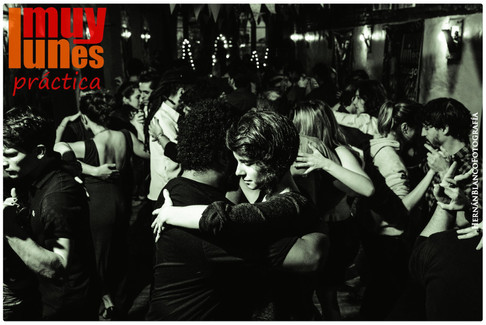









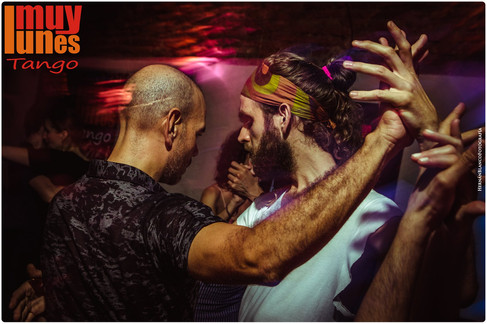





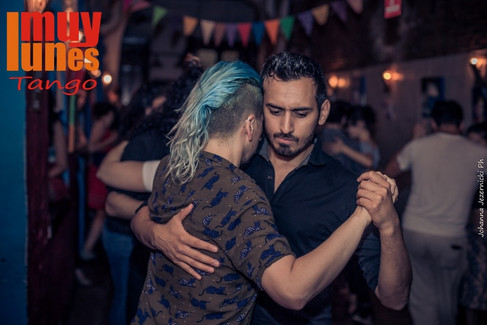








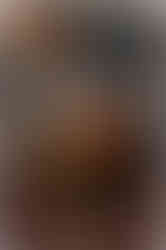


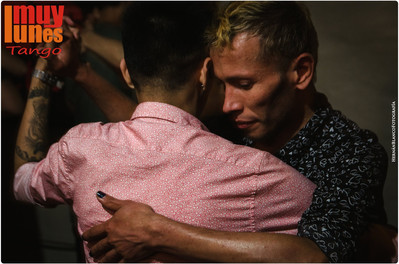







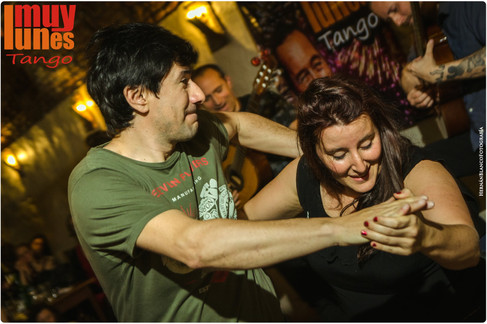











Comments